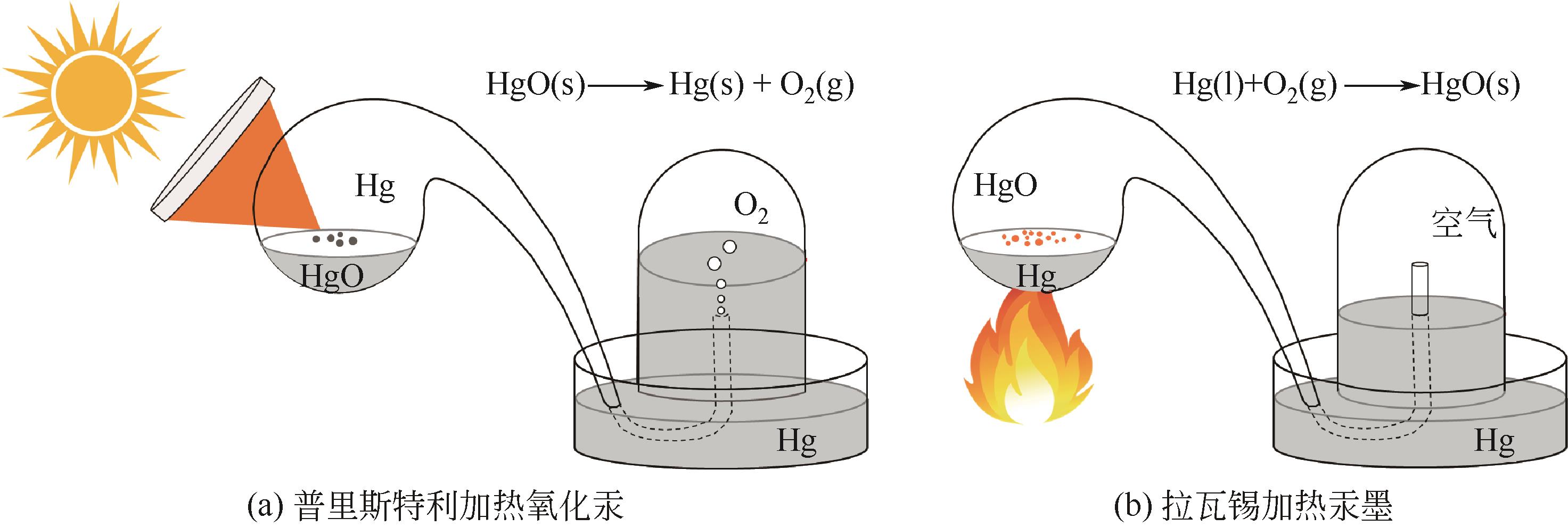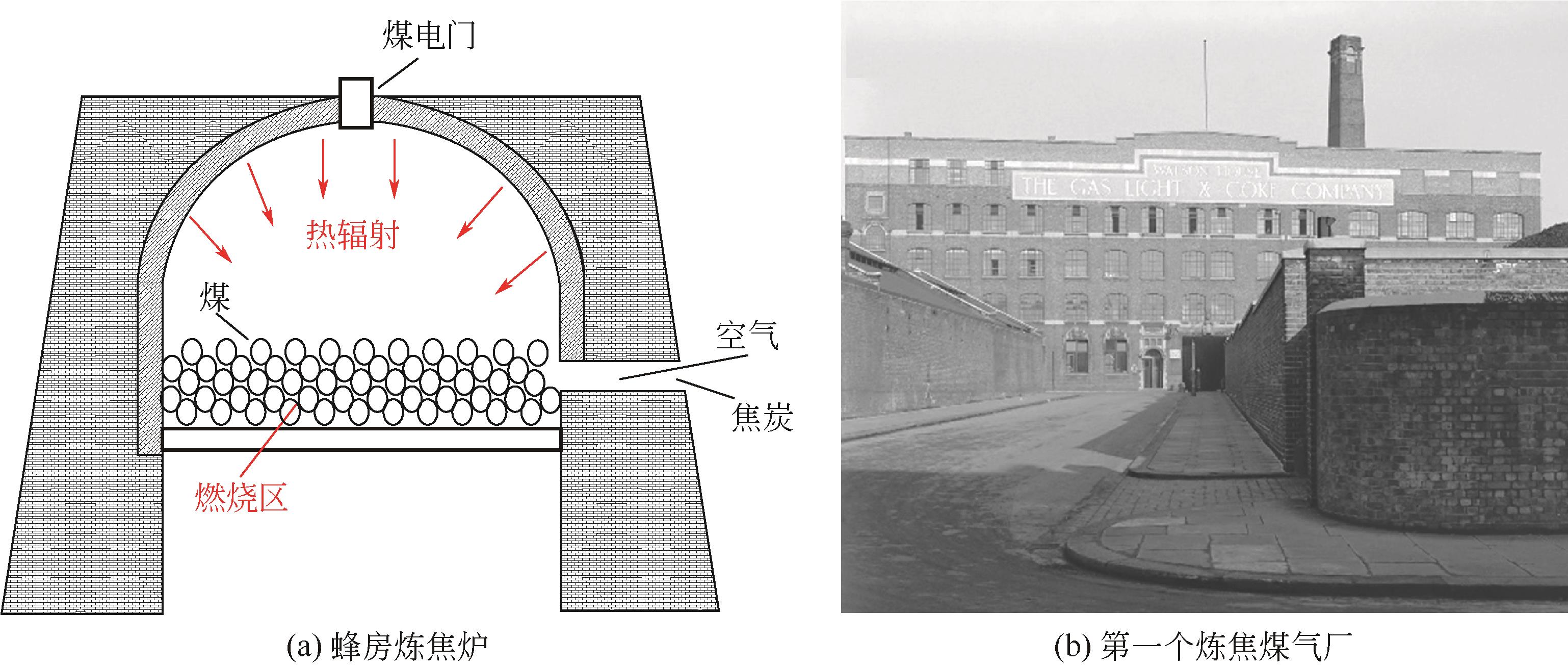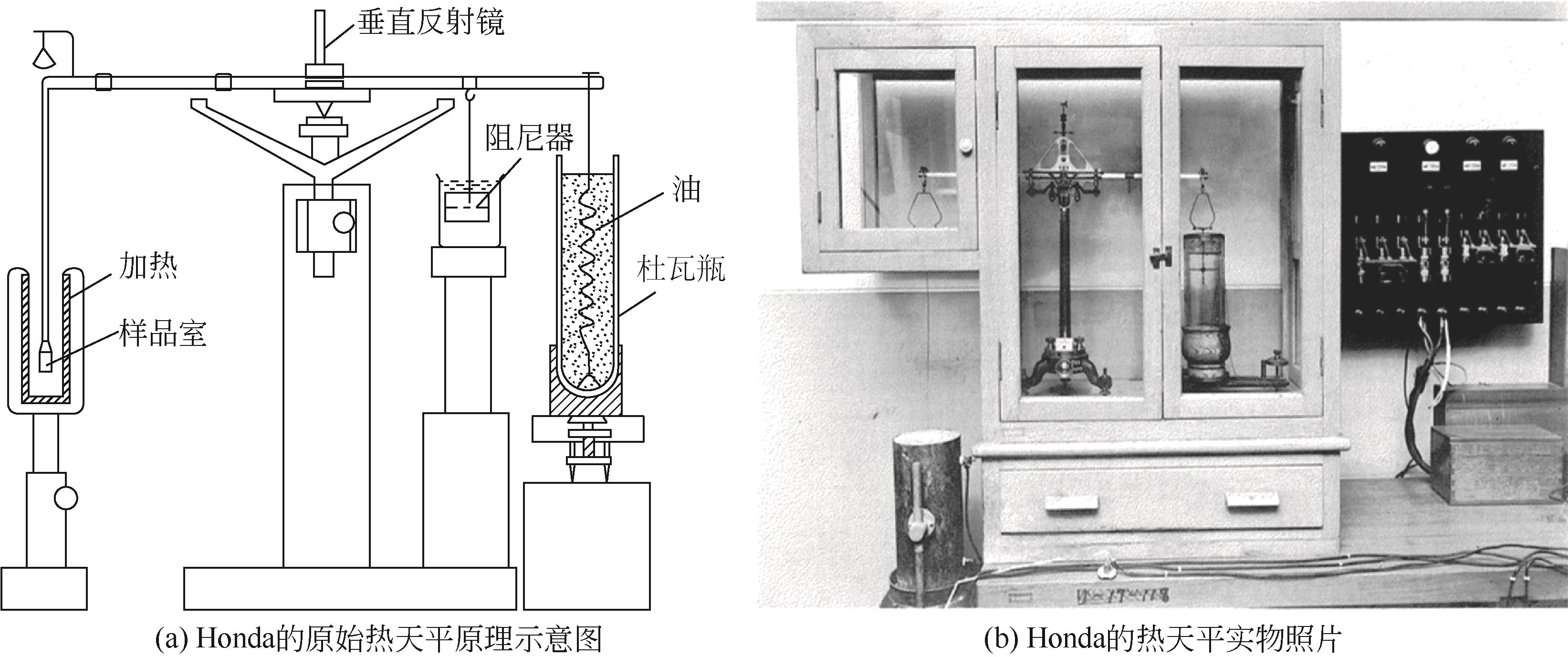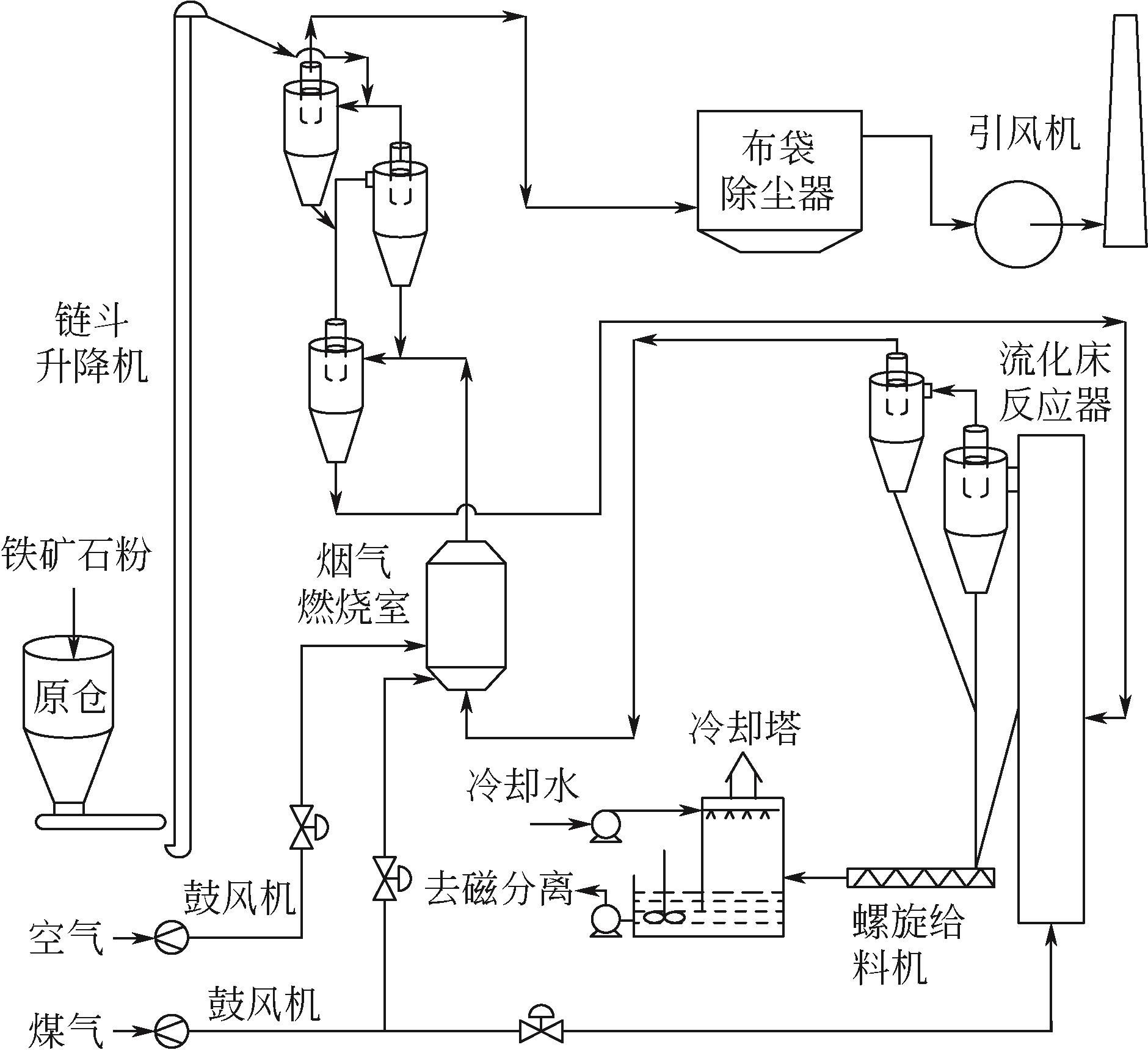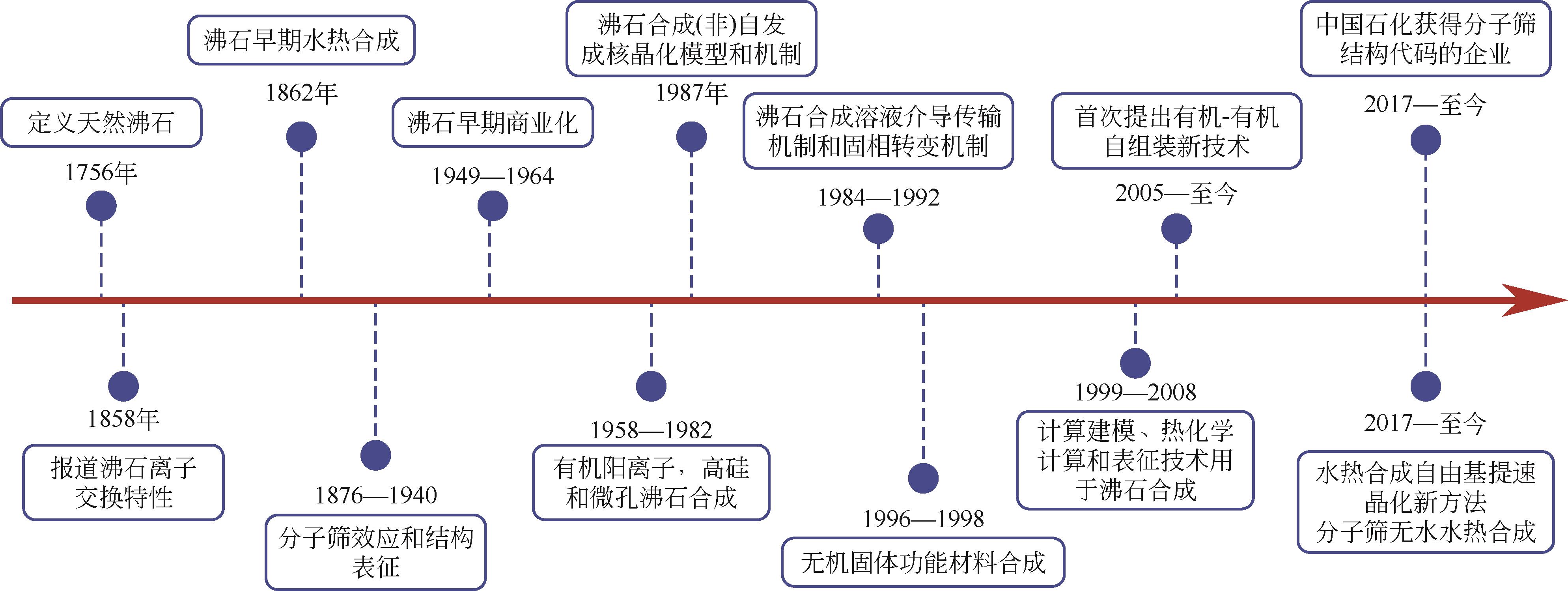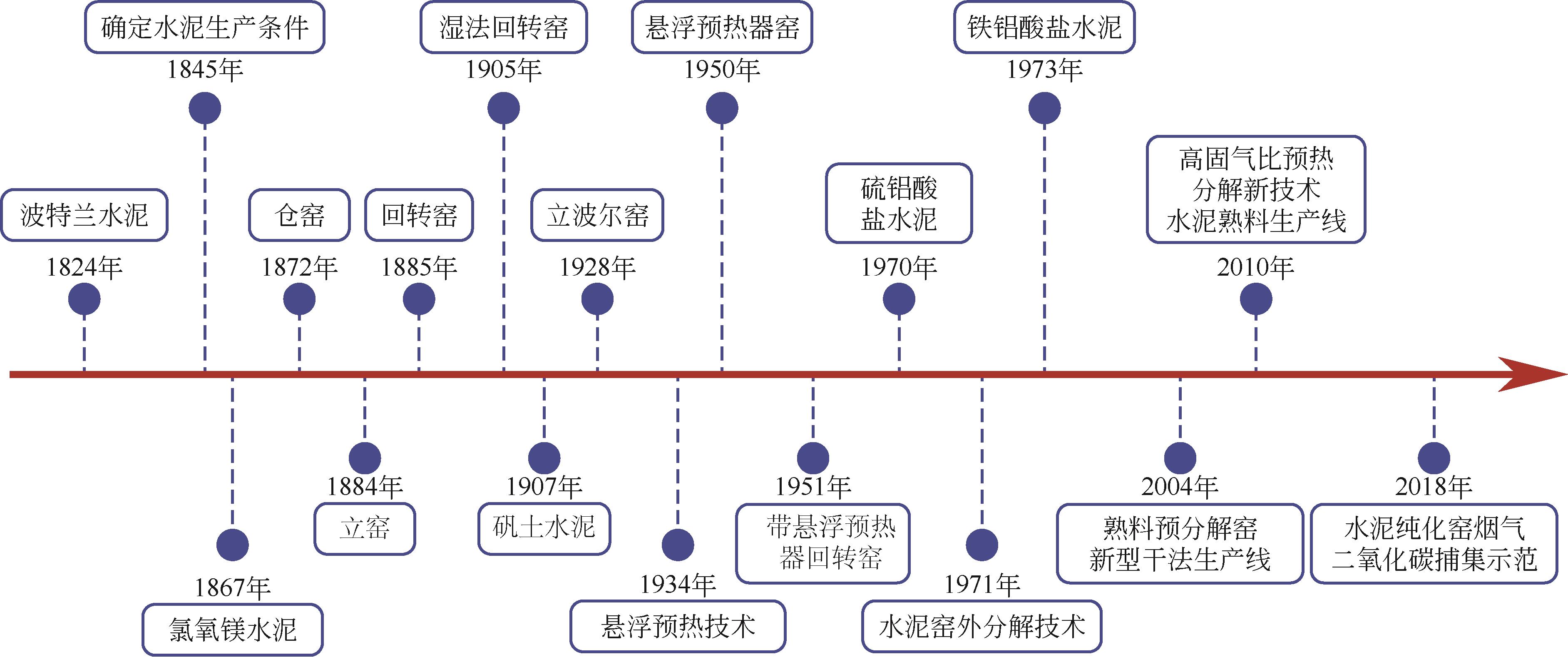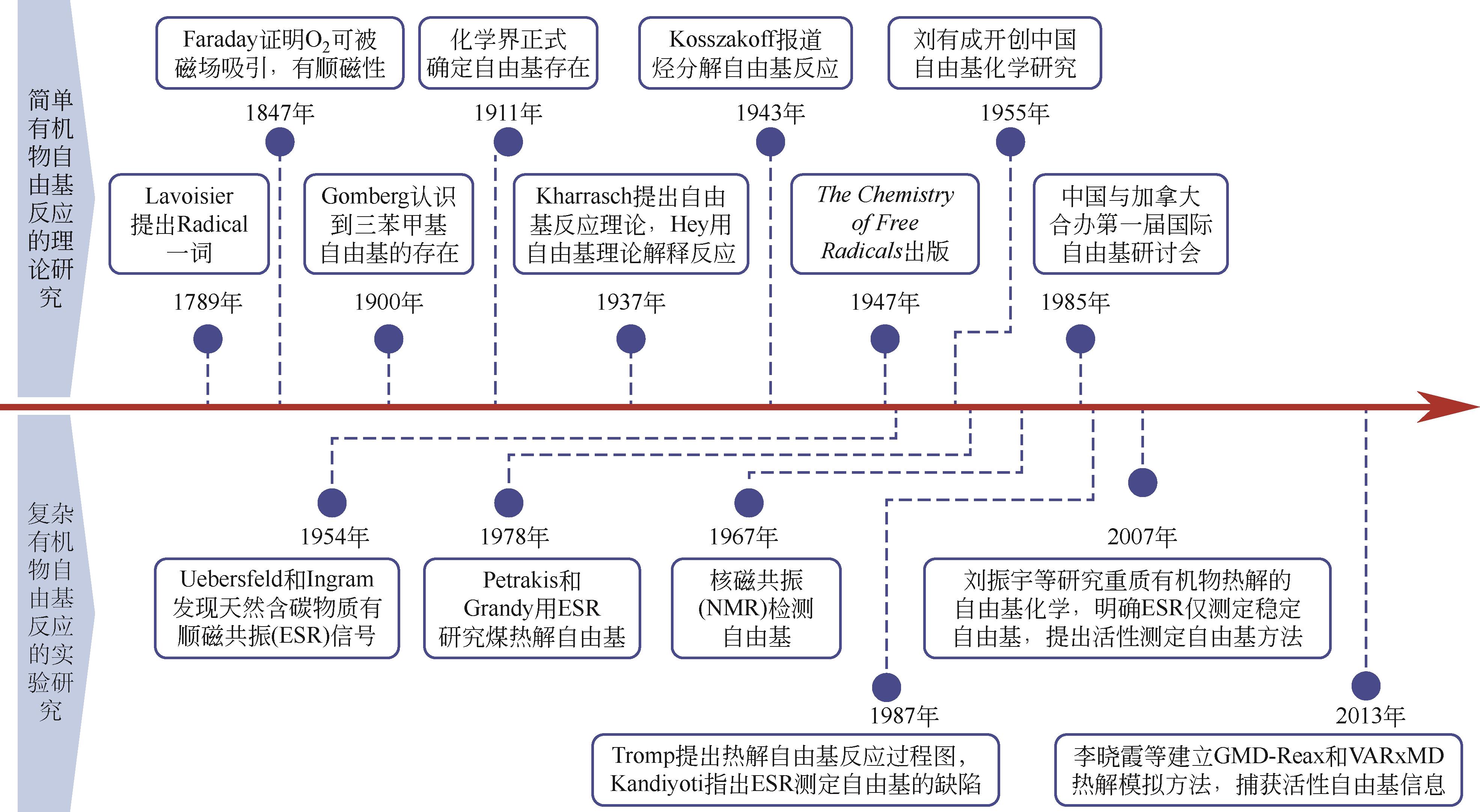Chemical Industry and Engineering Progress ›› 2024, Vol. 43 ›› Issue (7): 3513-3533.DOI: 10.16085/j.issn.1000-6613.2024-0315
• Column: Thermochemical Reaction Engineering Technology •
Development of science and technology in thermochemical reaction engineering
SONG Xingfei( ), JIA Xin, AN Ping, HAN Zhennan, XU Guangwen(
), JIA Xin, AN Ping, HAN Zhennan, XU Guangwen( )
)
- Key Laboratory on Resources Chemicals and Materials of Ministry of Education, Shenyang University of Chemical Technology, Shenyang 110142, Liaoning, China
-
Received:2024-02-26Revised:2024-05-05Online:2024-08-14Published:2024-07-10 -
Contact:XU Guangwen
热化学反应工程科学与技术发展与展望
- 沈阳化工大学特色资源化工与材料教育部重点实验室,辽宁 沈阳 110142
-
通讯作者:许光文 -
作者简介:宋兴飞(1986—),博士,副教授,教研室主任,研究方向为热化学转化。E-mail:xingfei@syuct.edu.cn。 -
基金资助:国家自然科学基金(22242018)
CLC Number:
Cite this article
SONG Xingfei, JIA Xin, AN Ping, HAN Zhennan, XU Guangwen. Development of science and technology in thermochemical reaction engineering[J]. Chemical Industry and Engineering Progress, 2024, 43(7): 3513-3533.
宋兴飞, 贾鑫, 安萍, 韩振南, 许光文. 热化学反应工程科学与技术发展与展望[J]. 化工进展, 2024, 43(7): 3513-3533.
share this article
Add to citation manager EndNote|Ris|BibTeX
URL: https://hgjz.cip.com.cn/EN/10.16085/j.issn.1000-6613.2024-0315
| 时间 | 学科/学会/协会/会议 | 时间 | 学科/学会/协会/会议 |
|---|---|---|---|
| 1920年 | 英国陶瓷研究协会 | 1970年 | 冶金反应工程学 |
| 1928年 | 国际燃烧大会 | 1974年 | 煤炭气化和液化国际会议 |
| 1930年 | 冶金物理学学科 | 1978年 | 中国工程热物理学会燃烧学分会 |
| 1933年 | 首届世界石油大会 | 1979年 | 中国化学会热力学与热分析专业委员会 |
| 1950年 | 反应流体力学 | 1979年 | 中国可再生能源学会 |
| 1952年 | 锅炉专业(中国) | 1979年 | 中国化学热力学和热分析学术会议 |
| 1952年 | 内燃机专业(中国) | 1980年 | 中国分析与应用裂解会议 |
| 1953年 | 国际煤岩学委员会 | 1980年 | 全国稀土熔盐化学和电化学学术交流会 |
| 1954年 | 国际燃烧学会 | 1981年 | 中国能源研究会 |
| 1955年 | 中国自由基化学(中国) | 1982年 | 中国煤炭加工利用协会 |
| 1956年 | 中国金属学会 | 1982年 | 国际燃烧学会-中国分会 |
| 1962年 | 中国煤炭学会 | 1982年 | 中国稀土学会 |
| 1965年 | 国际热分析联合会 | 1982年 | 首届中国稀土学会学术会议 |
| 1965年 | 国际分析与应用裂解会议 | 1983年 | 国际熔盐化学与技术会议 |
| 1966年 | 美国陶瓷研究协会 | 1985年 | 首届国际自由基研讨会 |
| 1967年 | 首届国际钢铁协会年会 | 1986年 | 首届全国冶金物理化学学术年会 |
| 1967年 | 首届国际化学气相沉积大会 | 1994年 | 中国炼焦行业协会 |
| 1969年 | 计算燃烧学 | 1995年 | 中国石油学会石油炼制分会 |
| 时间 | 学科/学会/协会/会议 | 时间 | 学科/学会/协会/会议 |
|---|---|---|---|
| 1920年 | 英国陶瓷研究协会 | 1970年 | 冶金反应工程学 |
| 1928年 | 国际燃烧大会 | 1974年 | 煤炭气化和液化国际会议 |
| 1930年 | 冶金物理学学科 | 1978年 | 中国工程热物理学会燃烧学分会 |
| 1933年 | 首届世界石油大会 | 1979年 | 中国化学会热力学与热分析专业委员会 |
| 1950年 | 反应流体力学 | 1979年 | 中国可再生能源学会 |
| 1952年 | 锅炉专业(中国) | 1979年 | 中国化学热力学和热分析学术会议 |
| 1952年 | 内燃机专业(中国) | 1980年 | 中国分析与应用裂解会议 |
| 1953年 | 国际煤岩学委员会 | 1980年 | 全国稀土熔盐化学和电化学学术交流会 |
| 1954年 | 国际燃烧学会 | 1981年 | 中国能源研究会 |
| 1955年 | 中国自由基化学(中国) | 1982年 | 中国煤炭加工利用协会 |
| 1956年 | 中国金属学会 | 1982年 | 国际燃烧学会-中国分会 |
| 1962年 | 中国煤炭学会 | 1982年 | 中国稀土学会 |
| 1965年 | 国际热分析联合会 | 1982年 | 首届中国稀土学会学术会议 |
| 1965年 | 国际分析与应用裂解会议 | 1983年 | 国际熔盐化学与技术会议 |
| 1966年 | 美国陶瓷研究协会 | 1985年 | 首届国际自由基研讨会 |
| 1967年 | 首届国际钢铁协会年会 | 1986年 | 首届全国冶金物理化学学术年会 |
| 1967年 | 首届国际化学气相沉积大会 | 1994年 | 中国炼焦行业协会 |
| 1969年 | 计算燃烧学 | 1995年 | 中国石油学会石油炼制分会 |
| 时间 | 工业化技术及装置 | 时间 | 工业化技术及装置 |
|---|---|---|---|
| 1922年 | 流态化气炉 | 1955年 | 钟罩式CVD炉生产多晶硅 |
| 1923年 | 第一套蒸汽裂解装置 | 1958年 | 磁化焙烧技术(中国) |
| 1929年 | 第一套延迟焦化装置 | 1962年 | 区熔法制备单晶硅 |
| 1936年 | 加压固定床气化炉 | 1963年 | 延迟焦化技术(中国) |
| 1940年 | 克虏伯-鲁奇外热式干馏炉 | 1967年 | 采用钠盐焙烧法冶炼稀土 |
| 1941年 | 皮江法炼镁 | 1971年 | Texaco水煤浆气化工艺 |
| 1941年 | 单相黄磷工业电炉(中国) | 1984年 | 新型干法水泥工艺(中国) |
| 1950年 | 巴斯夫氧热法电石工艺 | 1987年 | 浓淡煤粉燃烧技术 |
| 1954年 | 第一个熔盐堆实验装置 | 1988年 | 蒸汽裂解装置(中国) |
| 时间 | 工业化技术及装置 | 时间 | 工业化技术及装置 |
|---|---|---|---|
| 1922年 | 流态化气炉 | 1955年 | 钟罩式CVD炉生产多晶硅 |
| 1923年 | 第一套蒸汽裂解装置 | 1958年 | 磁化焙烧技术(中国) |
| 1929年 | 第一套延迟焦化装置 | 1962年 | 区熔法制备单晶硅 |
| 1936年 | 加压固定床气化炉 | 1963年 | 延迟焦化技术(中国) |
| 1940年 | 克虏伯-鲁奇外热式干馏炉 | 1967年 | 采用钠盐焙烧法冶炼稀土 |
| 1941年 | 皮江法炼镁 | 1971年 | Texaco水煤浆气化工艺 |
| 1941年 | 单相黄磷工业电炉(中国) | 1984年 | 新型干法水泥工艺(中国) |
| 1950年 | 巴斯夫氧热法电石工艺 | 1987年 | 浓淡煤粉燃烧技术 |
| 1954年 | 第一个熔盐堆实验装置 | 1988年 | 蒸汽裂解装置(中国) |
| 中和途径 | 科学路径 | 应用案例 | 减碳效果/亿吨CO2 | |
|---|---|---|---|---|
| 碳减排 | 燃烧反应重构 | 提高燃煤过程效率 | 15~23.0 | 20~40 |
| 高温热电材料 | 高温金属材料、高温热电材料创制 | |||
| 发电系统重构 | 高温热利用联合循环 | |||
| 非碳/低碳冶金 | 氢冶金替代炭冶金 | 约12.3 | ||
| 反应过程温和化 | 高温过程低温化与快速化 | 约7.0 | ||
| 碳替代 | 化石燃料碳替代 | 生物质替代化石燃料 | 约5.6 | 约10 |
| 石化原料多样化 | 生物或有机碳资源热解液化技术 | 约4.3 | ||
| 碳循环 | CO2捕集及矿化 | 流化床CO2矿化 | 约12.0 | 约20 |
| 生物炭固碳 | 生物质/有机废弃物负碳利用 | 约5.0 | ||
| 碳酸盐CO2原料化 | CO2低成本捕集、CO2的化学合成利用 | 约2.6 | ||
| 中和途径 | 科学路径 | 应用案例 | 减碳效果/亿吨CO2 | |
|---|---|---|---|---|
| 碳减排 | 燃烧反应重构 | 提高燃煤过程效率 | 15~23.0 | 20~40 |
| 高温热电材料 | 高温金属材料、高温热电材料创制 | |||
| 发电系统重构 | 高温热利用联合循环 | |||
| 非碳/低碳冶金 | 氢冶金替代炭冶金 | 约12.3 | ||
| 反应过程温和化 | 高温过程低温化与快速化 | 约7.0 | ||
| 碳替代 | 化石燃料碳替代 | 生物质替代化石燃料 | 约5.6 | 约10 |
| 石化原料多样化 | 生物或有机碳资源热解液化技术 | 约4.3 | ||
| 碳循环 | CO2捕集及矿化 | 流化床CO2矿化 | 约12.0 | 约20 |
| 生物炭固碳 | 生物质/有机废弃物负碳利用 | 约5.0 | ||
| 碳酸盐CO2原料化 | CO2低成本捕集、CO2的化学合成利用 | 约2.6 | ||
| 1 | 张濂, 许志美, 袁向前. 化学反应工程原理[M]. 2版. 上海: 华东理工大学出版社, 2007. |
| ZHANG Lian, XU Zhimei, YUAN Xiangqian. Chemical reaction engineering[M]. 2nd ed. Shanghai: East China University of Science and Technology Press, 2007. | |
| 2 | 邢瑞芝, 朱中南. 光化学反应工程[J]. 化学反应工程与工艺, 1994, 10(2): 187-194. |
| XING Ruizhi, ZHU Zhongnan. Photochemical reaction engineering[J]. Chemical Reaction Engineering and Technology, 1994, 10(2): 187-194. | |
| 3 | 杨维驿. 电化学反应工程学的发展与展望[J]. 氯碱工业, 1984, 20(6): 1-8. |
| YANG Weiyi. Development and prospect of electrochemical reaction engineering[J]. Chlor-Alkali Industry, 1984, 20(6): 1-8. | |
| 4 | 雷道炎. 聚合反应工程研究的若干进展[J]. 化学工程, 1979, 7(6): 1-6. |
| LEI Daoyan. Some progress in polymerization engineering research[J]. Chemical Engineering (China), 1979, 7(6): 1-6. | |
| 5 | XU Guangwen, BAI Dingrong, XU Chunming, et al. Challenges and opportunities for engineering thermochemistry in carbon-neutralization technologies[J]. National Science Review, 2023, 10(9): nwac217. |
| 6 | ANG B W, SU Bin. Carbon emission intensity in electricity production: A global analysis[J]. Energy Policy, 2016, 94: 56-63. |
| 7 | LIU Zhu, GUAN Dabo, WEI Wei, et al. Reduced carbon emission estimates from fossil fuel combustion and cement production in China[J]. Nature, 2015, 524(7565): 335-338. |
| 8 | JIN Peng, JIANG Zeyi, BAO Cheng, et al. The energy consumption and carbon emission of the integrated steel mill with oxygen blast furnace[J]. Resources, Conservation and Recycling, 2017, 117: 58-65. |
| 9 | ANTOINE L. Traitélémentaire de Chimie[M]. Paris: Chez Cuchet, Libraire, rue & htel Serpente. |
| 10 | 许光文, 高士秋, 余剑. 解耦热化学转化基础与技术[M]. 北京: 科学出版社, 2016. |
| XU Guangwen, GAO Shiqiu, YU Jian. Foundation and technology of decoupling thermochemical transformation[M]. Beijing: Science Press, 2016. | |
| 11 | Saito Y, Morikawa J. Honda’s thermobalance[J]. J. Therm. Anal. Calorim., 2013, 113: 1157-1168. |
| 12 | 斯穆特, 史密斯. 煤的燃烧与气化[M]. 傅维标, 等译. 北京: 科学出版社, 1992. |
| SMOOT L D, SMITH P J. Coal combustion and gasification[M]. FU Weibiao, et al. trans. Beijing: Science Press, 1992. | |
| 13 | CAMP J M, FRANCIS C B. The making, shaping and treating of steel[M]. Pittsburgh, Pennsylvania : Carnegie Steel Company, 2003. |
| 14 | 中国科学技术协会, 中国金属学会. 冶金工程技术学科发展报告(2012—2013)[M]. 北京: 中国科学技术出版社, 2014. |
| China Association for Science and Technology, The China Society of Metals. Report on advances in metallurgical engineering and technology[M]. Beijing: China Science and Technology Press, 2014. | |
| 15 | 邵象华. 钢铁冶金学[M]. 沈阳: 东北工业出版社, 1951. |
| SHAO Xianghua. Iron and steel metallurgy [M]. Shenyang: Northeast Industrial Press, 1951. | |
| 16 | 黄世平, Wong Alex, 刘守显, 等. SCOPE21工艺现状及应用推广存在的问题[C]//第十二届中国钢铁年会论文集. 北京, 2019: 691-699. |
| HUANG Shiping, WLONG Alex, LIU Shouxian, et al. Current status and problem in application promotion of SCOPE21 process[C]//Proceedings of the 12th China Iron and Steel Annual Conference. Beijing, 2019: 691-699. | |
| 17 | 范汝新. 我国新工艺炭黑技术的发展[J]. 橡胶工业, 2000, 47(4): 237-242. |
| FAN Ruxin. Development of nwe technical black in China[J]. China Rubber Industry, 2000, 47(4): 237-242. | |
| 18 | 李静海, 郭慕孙, 白蕴茹, 等. 解耦循环流化床燃烧系统及其脱硫与脱硝方法: CN1203117A[P]. 1998-12-30. |
| Li Jinghai, GUO Musun, BAI Yunru, et al. Decoupled circulating fluidized bed combustion system and its desulfurization and denitrification methods: CN1203117A[P]. 1998-12-30. | |
| 19 | 王辅臣. 煤气化技术在中国: 回顾与展望[J]. 洁净煤技术, 2021, 27(1): 1-33. |
| WANG Fuchen. Coal gasification technologies in China: Review and prospect[J]. Clean Coal Technology, 2021, 27(1): 1-33. | |
| 20 | 何威. 中国“洛阳浮法玻璃工艺” 技术发展与创新——超大吨位浮法玻璃熔窑技术的研发过程和发展回顾[J]. 玻璃, 2021, 48(10): 22-30. |
| HE Wei. Technological development and innovation of Luoyang floating glass technology in China—A review of the research and development process of super tonnage float glass melting furnace technology[J]. Glass, 2021, 48(10): 22-30. | |
| 21 | 百兆瓦级熔盐塔式光热电站在敦煌建成[J]. 电力安全技术, 2019, 21(1): 29. |
| 100MW molten salt tower photothermal power station built in Dunhuang[J]. Electric Safety Technology, 2019, 21(1): 29. | |
| 22 | 张辉. 轻质原油裂解制乙烯工业化试验取得重大突破[N]. 中国石化报, 2021-09-17(001). |
| ZHANG Hui. A major breakthrough was achieved in the industrial test of cracking light crude oil to produce ethylene[N]. China Petrochemical News, 2021-09-17(001) | |
| 23 | DONG Qi, YAO Yonggang, CHENG Sichao, et al. Programmable heating and quenching for efficient thermochemical synthesis[J]. Nature, 2022, 605: 470-476. |
| 24 | ZHANG Chun, WU Rongcheng, XU Guangwen. Coal pyrolysis for high-quality tar in a fixed-bed pyrolyzer enhanced with internals[J]. Energy and Fuels, 2014, 28(1): 236-244. |
| 25 | XU Guangwen. Micro fluidized bed reaction kinetic analyzer: A project application submitted to Chinese Academy of Sciences, C.N.I.P.A. (CNIPA) (Ed.), China, 2005. |
| 26 | 刘振宇. 重质有机资源热解过程中的自由基化学[J]. 北京化工大学学报(自然科学版), 2018, 45(5): 8-24. |
| LIU Zhenyu. Radical chemistry in the pyrolysis of heavy organics[J]. Journal of Beijing University of Chemical Technology (Natural Science Edition), 2018, 45(5): 8-24. | |
| 27 | 江绵恒, 徐洪杰, 戴志敏. 未来先进核裂变能——TMSR核能系统[J]. 中国科学院院刊, 2012, 27(3): 366-374. |
| JIANG Mianheng, XU Hongjie, DAI Zhimin. Advanced fission energy program-TMSR nuclear energy system[J]. Bulletin of Chinese Academy of Sciences, 2012, 27(3): 366-374. | |
| 28 | 张立宽. 煤制油,煤炭高效利用的“绿色大道” [N]. 中国矿业报, 2019-06-01(3). |
| ZHANG Likuan. Coal to oil, a green avenue for efficient utilization of coal[N]. China Mining News, 2019-06-01 (3) | |
| 29 | 慈欣. 新型“煤炭超临界” 多联产技术示范项目启动[J]. 中国设备工程, 2018(6): 4. |
| Xin CI. The new demonstration project of “coal supercritical” polygeneration technology was launched[J]. China Plant Engineering, 2018(6): 4. | |
| 30 | 王月, 赵秦峰, 张占全, 等. 碳中和背景下国内外废塑料裂解法回收进展[J]. 化工进展, 2022, 41(3): 1470-1478. |
| WANG Yue, ZHAO Qinfeng, ZHANG Zhanquan, et al. Plastic waste recycling by pyrolysis at home and abroad under the background of carbon neutrality[J]. Chemical Industry and Engineering Progress, 2022, 41(3): 1470-1478. | |
| 31 | 许光文. 工程热化学专刊前言[J].化工学报, 2019, 70(8): 2821-2822. |
| XU Guangwen. Preface to the Special Journal of Engineering Thermochemistry[J]. CIESC Journal, 2019, 70(8): 2821-2822. | |
| 32 | HE Mingyuan, ZHANG Kun, GUAN Yejun, et al. Green carbon science: Fundamental aspects[J]. National Science Review, 2023, 10(9): nwad046. |
| 33 | 张去非, 穆晓东. 微细粒弱磁性铁矿石资源的特征及分选工艺[J]. 矿冶工程, 2003, 23(4): 23-26. |
| ZHANG Qufei, MU Xiaodong. Characteristics and separation process of fine weakly magnetic iron ore resources[J]. Mining and Metallurgical Engineering, 2003, 23(4): 23-26. | |
| 34 | 杜鹤桂. 高炉冶炼钒钛磁铁矿原理[M]. 北京: 科学出版社, 1996. |
| DU Hegui. Principle of smelting vanadium-titanium magnetite in blast furnace[M]. Beijing: Science Press, 1996. | |
| 35 | 韩跃新. 铁矿资源高效开发利用关键技术与装备[M]. 北京: 冶金工业出版社, 2019. |
| HAN Yuexin. Innovative technology and equipment for efficient utilization of iron ore[M]. Beijing: Metallurgical Industry Press, 2019. | |
| 36 | 王汉杰. 酒钢悬浮磁化焙烧选矿改造工程全面达产达标[N]. 中国冶金报, 2021-09-02. |
| WANG Hanjie. The suspension magnetization roasting and beneficiation renovation project of Jiuquan Iron and Steel Company has fully reached production and standards[N] China Metallurgical News, 2021-09-02 | |
| 37 | 朱庆山, 李洪钟. 难选铁矿流态化磁化焙烧研究进展与发展前景[J]. 化工学报, 2014, 65(7): 2437-2442. |
| ZHU Qingshan, LI Hongzhong. Status quo and development prospect of magnetizing roasting via fluidized bed for low grade iron ore[J]. CIESC Journal, 2014, 65(7): 2437-2442. | |
| 38 | 朱庆山, 谢朝晖, 李洪钟, 等. 对难选铁矿石粉体进行磁化焙烧的工艺系统及焙烧的工艺: CN101386908A[P]. 2009-03-18. |
| ZHU Qingshan, XIE Chaohui, LI Hongzhong, et al. Process system and roasting process for magnetic roasting of difficult to select iron ore powder: CN101386908A[P]. 2009-03-18. | |
| 39 | ANAMERIC Basak, Komar KAWATRA S. Properties and features of direct reduced iron[J]. Mineral Processing and Extractive Metallurgy Review, 2007, 28(1): 59-116. |
| 40 | 朱庆山. 超低碳炼铁技术路径分析[J]. 化工进展, 2022, 41(3): 1391-1398. |
| ZHU Qingshan. Development pathway analyses for various ironmaking routes with ultra-low CO2 emission[J]. Chemical Industry and Engineering Progress, 2022, 41(3): 1391-1398. | |
| 41 | ELMQUIST S A, WEBER P, EICHBERGER H. Operational results of the circored fine ore direct reduction plant in Trinidad. Stahl und Eisen, 2002, 122(2): 59-64 (in German). |
| 42 | 李炳炎. 炭黑生产与应用手册[M]. 北京: 化学工业出版社, 2000. |
| LI Bingyan. Handbook of carbon black production and application[M]. Beijing: Chemical Industry Press, 2000. | |
| 43 | 天津海豚炭黑公司各项指标居同行业首位[J]. 天津橡胶, 1998(4): 28. |
| Tianjin Dolphin Carbon Black Company ranks first in the same industry[J]. Rubber & Plastics Resources Utilization, 1998(4): 28. | |
| 44 | 郭隽奎. 炭黑工业现状与节能减排展望[J]. 橡胶科技市场, 2011, 9(4): 8-12. |
| GUO Juankui. Status of carbon black industry and prospect of energy saving and emission reduction[J]. China Rubber Science and Technology Market, 2011, 9(4): 8-12. | |
| 45 | BYRAPPA K, YOSHIMURA Masahiro. Hydrothermal synthesis and growth of zeolites[M]//Handbook of hydrothermal technology. Amsterdam: Elsevier, 2013: 269-347. |
| 46 | ZHOU Bin, YU Jihong, LI Jiyang, et al. Rational design of two-dimensional layered aluminophosphates with[Al3P4O16]3- stoichiometry[J]. Chemistry of Materials, 1999, 11: 1094-1099. |
| 47 | ZHAO Chunyan, FENG Shouhua, CHAO Zhicheng, et al. Hydrothermal synthesis of the complex fluorides LiBaF3 and KMgF3 with perovskite structures under mild conditions[J]. Chemical Communications, 1996(14): 1641-1642. |
| 48 | 傅维, 舒兴田, 何鸣元. ZRP-1分子筛的特性[C]//第九届全国催化学术会议, 1998. |
| FU Wei, SHU Xingtian, HE Mingyuan characteristics of ZRP-1 molecular sieve[C]//The 9th National Conference on Catalysis, 1998. | |
| 49 | 张晓昕, 郝小明, 何鸣元. 石油炼制和基本有机化学品合成的绿色化学研究[J]. 中国基础科学, 2006, 8(3): 32-37. |
| ZHANG Xiaoxin, HAO Xiaoming, HE Mingyuan. Significant progress in green technology related to petroleum refining and petrochemical production[J]. China Basic Science, 2006, 8(3): 32-37. | |
| 50 | FENG Guodong, CHENG Peng, YAN Wenfu, et al. Accelerated crystallization of zeolites via hydroxyl free radicals[J]. Science, 2016, 351(6278): 1188-1191. |
| 51 | LUO Yi, SMEETS Stef, PENG Fei, et al. Synthesis and structure determination of large-pore zeolite SCM-14[J]. Chemistry, 2017, 23(66): 16829-16834. |
| 52 | 胡曙光. 特种水泥[M]. 2版. 武汉: 武汉理工大学出版社, 2010. |
| HU Shuguang. Special cements[M]. 2nd ed. Wuhan: Wuhan University of Technology Press, 2010. | |
| 53 | 轩红钟, 金峰, 周金波, 等. 水泥窑烟气CO2捕集纯化示范生产线运行及优化[J]. 四川水泥, 2019(9): 1. |
| XUAN Hongzhong, JIN Feng, ZHOU Jinbo, et al. Operation and optimization of demonstration production line for CO2 capture and purification of flue gas from cement kiln[J]. Sichuan Cement, 2019(9): 1. | |
| 54 | 刘成雄, 陈双七. 秦皇岛玻璃工业研究设计院900t/d级超大型浮法玻璃技术取得成功——张家港华汇900t/d级超大型优质浮法玻璃生产线建成投产[J]. 玻璃, 2004, 31(5): 3. |
| LIU Chengxiong, CHEN Shuangqi. Qinhuangdao Glass Industry Research and Design Institute has achieved success in 900t/d super-large float glass technology-Zhangjiagang Hua Hui 900t/d super-large high-quality float glass production line was completed and put into operation[J]. Glass, 2004, 31(5): 3. | |
| 55 | Mitchell WALDROP M. Nuclear energy: Radical reactors[J]. Nature, 2012, 492(7427): 26-29. |
| 56 | 中科院上海应用物理所. 未来先进核裂变能——钍基熔盐堆核能系统(TMSR)[J]. 中国科学院院刊, 2016, 31(Z2): 27-31. |
| Shanghai Institute of Applied Physics, Chinese Academy of Sciences. Future advanced nuclear fission energy —Thorium based molten salt reactor nuclear energy system (TMSR)[J] Journal of the Chinese Academy of Sciences, 2016, 31 (Z2): 27-31 | |
| 57 | ZHOU Bin, LIU Qingya, SHI Lei, et al. Electron spin resonance studies of coals and coal conversion processes: A review[J]. Fuel Processing Technology, 2019, 188: 212-227. |
| 58 | FOWLER Timothy G, BARTLE Keith D, KANDIYOTI Rafael. Limitations of electron spin resonance spectroscopy in assessing the role of free radicals in the thermal reactions of coal[J]. Energy & Fuels, 1989, 3(4): 515-522. |
| 59 | XIANG Chong, LIU Qingya, SHI Lei, et al. A study on the new type of radicals in corncob derived biochars[J]. Fuel, 2020, 277: 118163. |
| 60 | 刘振宇. 重质有机资源热解的自由基化学[M]. 北京: 化学工业出版社, 2024. |
| LIU Zhenyu. The free radical chemistry in pyrolysis of heavy organic resources[M]. Beijing: Chemical Industry Press, 2024. | |
| 61 | 李晓霞, 郑默, 韩君易, 等. 煤热解模拟新方法—ReaxFF MD的GPU并行与化学信息学分析[J]. 中国科学: 化学, 2015, 45(4): 373-382. |
| LI Xiaoxia, ZHENG Mo, HAN Junyi, et al. Coal pyrolysis simulation by GPU-enabled Reax FF MD and cheminformatics analysis[J]. Scientia Sinica Chimica, 2015, 45(4): 373-382. | |
| 62 | ZHENG Mo, LI Xiaoxia, NIE Fengguang, et al. Investigation of model scale effects on coal pyrolysis using ReaxFF MD simulation[J]. Molecular Simulation, 2017, 43(13/14/15/16): 1081-1088. |
| 63 | 丁延伟. 热分析基础[M]. 合肥: 中国科学技术大学出版社, 2020. |
| DING Yanwei Fundamentals of thermal analysis[M]. Hefei: University of Science and Technology of China Press, 2020 | |
| 64 | LIU Ziru. Review and prospect of thermal analysis technology applied to study thermal properties of energetic materials[J]. FirePhysChem, 2021, 1(3): 129-138. |
| 65 | HAN Zhennan, YUE Junrong, WANG Chao, et al. Micro reactors for measurement and analysis of thermochemical gas-solid reactions[J]. Resources Chemicals and Materials, 2022, 1(2): 152-166. |
| 66 | 国家市场监督管理总局, 国家标准化管理委员会. 颗粒 气固反应测定 微型流化床法: [S]. 北京: 中国标准出版社, 2020. |
| State Administration for Market Regulation, Standardization Administration of the People’s Republic of China. Particle—Gas-solid reaction measurement—Micro fluidized bed method: [S]. Beijing: Standards Press of China, 2020. | |
| 67 | 许光文, 白丁荣, 刘明言. 微型流化床: 基础与应用[J]. 北京: 化学工业出版社, 2023. |
| XU Guangwen, BAI Dingrong, LIU Mingyan. Micro fluidization: Fundamentals and applications[M]. Beijing: Chemical Industry Press, 2023. | |
| 68 | HAN Zhennan, YUE Junrong, GENG Sulong, et al. State-of-the-art hydrodynamics of gas-solid micro fluidized beds[J]. Chemical Engineering Science, 2021, 232: 116345. |
| 69 | HAN Zhennan, JIA Xin, SONG Xingfei, et al. Engineering thermochemistry to cope with challenges in carbon neutrality[J]. Journal of Cleaner Production, 2023, 416: 137943. |
| 70 | GUO Zhancheng, WANG Shiwei, BAI Dingrong. Engineering thermochemistry: The science critical for the paradigm shift toward carbon neutrality[J]. Resources Chemicals and Materials, 2023, 2(4): 331-334. |
| [1] | HAN Wei, HAN Hengwen, CHENG Wei, TANG Weijian. Research progress of biomass fuels technology driven by carbon neutrality [J]. Chemical Industry and Engineering Progress, 2024, 43(5): 2463-2474. |
| [2] | HUANG Sheng, YANG Zhenli, LI Zhenyu. Analysis of optimization path of developing China's hydrogen industry [J]. Chemical Industry and Engineering Progress, 2024, 43(2): 882-893. |
| [3] | CHEN Chongming, ZENG Siming, LUO Xiaona, SONG Guosheng, HAN Zhongge, YU Jinxing, SUN Nannan. Preparation and performance of carbon supported potassium-based CO2 adsorbent derived from hyper-cross linked polymers [J]. Chemical Industry and Engineering Progress, 2023, 42(3): 1540-1550. |
| [4] | YAO Lun, ZHOU Yongjin. Progress in microbial utilization of one-carbon feedstocks for biomanufacturing [J]. Chemical Industry and Engineering Progress, 2023, 42(1): 16-29. |
| [5] | HU Bing, XU Lijun, HE Shan, SU Xin, WANG Jiwei. Researching progress of hydrogen production by PEM water electrolysis under the goal of carbon peak and carbon neutrality [J]. Chemical Industry and Engineering Progress, 2022, 41(9): 4595-4604. |
| [6] | ZHOU Ying, ZHOU Hongjun, XU Chunming. Exploration of the development path for the hydrogen energy [J]. Chemical Industry and Engineering Progress, 2022, 41(8): 4587-4592. |
| [7] | YANG Xueping. Exploration on technical path of modern coal chemical industry under the background of carbon neutralization [J]. Chemical Industry and Engineering Progress, 2022, 41(7): 3402-3412. |
| [8] | ZHOU Hongjun, ZHOU Ying, XU Chunming. Exploration of the CO2 conversion under China’s carbon neutrality goal [J]. Chemical Industry and Engineering Progress, 2022, 41(6): 3381-3385. |
| [9] | HUANG Sheng, WANG Jingyu, LI Zhenyu. Analysis of green and low-carbon development path of petroleum and chemical industry under the goal of carbon neutrality [J]. Chemical Industry and Engineering Progress, 2022, 41(4): 1689-1703. |
| [10] | WANG Yue, ZHAO Qinfeng, ZHANG Zhanquan, LEI Junwei, HOU Yuandong. Plastic waste recycling by pyrolysis at home and abroad under the background of carbon neutrality [J]. Chemical Industry and Engineering Progress, 2022, 41(3): 1470-1478. |
| [11] | FENG Xiang, YANG Chaohe, CHEN De. Boosting renewable hydrogen production from biomass wastes by sorption enhanced reforming [J]. Chemical Industry and Engineering Progress, 2022, 41(3): 1107-1110. |
| [12] | XU Ming, SHAO Mingfei, LIU Qingya, DUAN Xue. Hydrogen generation from electrochemical water splitting coupling carbonate reduction [J]. Chemical Industry and Engineering Progress, 2022, 41(3): 1121-1124. |
| [13] | XU Nanping, ZHAO Jing, LIU Gongping. Thinking of membrane technology development towards “carbon emission peak” and “carbon neutrality” targets [J]. Chemical Industry and Engineering Progress, 2022, 41(3): 1091-1096. |
| [14] | TIAN Yuanyu, QIAO Yingyun, ZHANG Yongning. Construction of green emission reduction system under the constraint of carbon neutrality [J]. Chemical Industry and Engineering Progress, 2022, 41(2): 1078-1084. |
| [15] | HUANG Sheng, WANG Jingyu, GUO Pei, LI Zhenyu. Short-term strategy and long-term prospect of energy structure optimization under carbon neutrality target [J]. Chemical Industry and Engineering Progress, 2022, 41(11): 5695-5708. |
| Viewed | ||||||
|
Full text |
|
|||||
|
Abstract |
|
|||||


